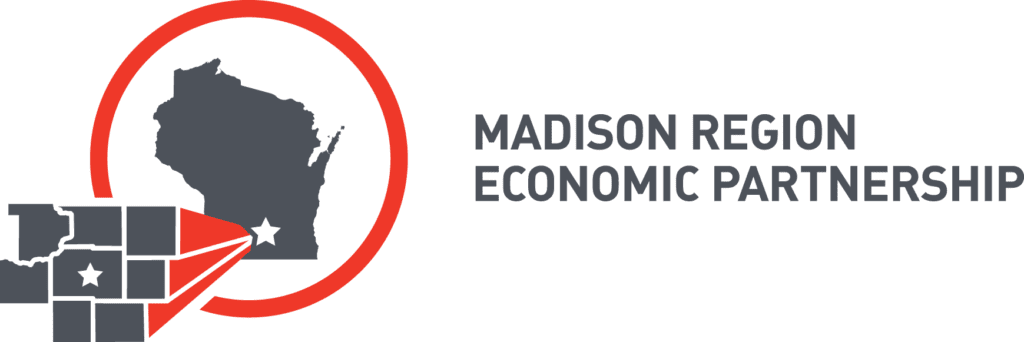2019 was another banner year for Economic Development in Sun Prairie.
Some of the top 2019 highlights were:
10. Main Street and Grand Avenue Development Moving Forward – Whether is the Grand on Main project, the Hy-Vee project, the Summit Credit Union project, or the senior housing project, this area represents one of the last key commercial areas to be developed on the Grand Avenue corridor.
9. City Participates in Joint Marketing of Opportunity Zones – For the first time ever, the cities of Madison, Sun Prairie, Monona, and Fitchburg collaborated on a shared marketing partnership on federally designated Opportunity Zones.
We created a shared information prospectus, and jointly hosted several federal agencies to tour our zones together. This collaboration has been a great partnership, and will hopefully not only increase our marketing of our city, but could also increase our chances of obtaining federal funding for major projects like housing or transportation.
8. City Acquires Downtown Properties – The most effective way for the city to impact change for the better in Downtown Sun Prairie is to acquire key properties and to turn around and facilitate improvements on those properties.
The City now owns 117 Columbus St., 402 E. Main St and 111 Vine St., and is actively pursuing projects that will improve parking options, enhance our tax base, and facilitate more economic activity in the downtown.
These sites will build on the city’s previous successes of Cannery Square, New Perspective Senior Living, Market Street Diner, and Full Mile Beer Company & Kitchen.
7. Royle Printing and Palmer Johnson Expand in the Sun Prairie Business Park – One of the best indicators of a healthy local economy is when you have current employers expand.
Both Royle Printing and Palmer Johnson have made significant investments in Sun Prairie and continue to grow here. While both projects had options outside of Sun Prairie, the quality of workforce, the success of their current operations, and some assistance from the city made sure that this next round of private investment from these companies stayed right here.
6. Downtown Redevelopment Plan Completed – With the help a grant from the Wisconsin Economic Development Corporation, and a lot of work by our Downtown Redevelopment Steering Committee and property owners, the Lakota Group created 8 different scenarios for future development, and focused that input into one recommended vision for the area that was destroyed by the gas main explosion in 2018.
This plan will help set the stage for property owners to bring forward their vision for this area, and establish some expectations or how and when the city may make investments of public TIF dollars here.
It is hoped that the first project gets started in 2020.
5. City Approves Purchase Agreement with Developer for Schneider Property – In addition to completing some major piece of needed regional stormwater infrastructure, the city has agreed to turn around and sell the additional land on the Schneider property to a developer for the construction of a new Meijer store and supporting commercial development.
It will be one of the first times that the city was able to cover some of its cost by selling excess land.
Because of the infrastructure here, this has been one of the more complicated projects ever worked on by the economic development staff.
As some of the final details get wrapped up in 2019, staff is hopeful to see dirt moving on the project before the end of 2020.
4. Park 151 Development Accelerates – Between Sani-Matic’s new facility and a new multi-tenant building both opening in 2019, and a second multi-tenant building that is already under construction, Interstate Partners has figured out that Sun Prairie is a good location for business.
Tax Increment Finance (TIF) District #13 is a traditional industrial TIF District that paid for the infrastructure for this area, and is one of the most successful TIF Districts in the City.
3. MacDon Opens New R&D Facility in the Sun Prairie Business Park – While it largely stayed under the radar locally, MacDon’s selection of Sun Prairie as the location for its new R&D facility was hailed as one of the Madison Region’s more notable foreign direct investment projects in 2019.
It represents what we believe is a perfect combination of high end technical jobs, a great working relationship with the University of Wisconsin, and a glimpse of what should be a bright future as a part of Sun Prairie’s and the Madison Region economy.
2. Imperial Blades Acquired by Milwaukee Tool – The city has been working with Imperial Blades for several years on a potential expansion project here.
Fortunately for them and us, another great Wisconsin company that is making major investments in our state had just acquired them.
Milwaukee Tool saw the same great opportunity that Imperial Blades had been working on, and they announced their plans to proceed with their expansion here in Sun Prairie.
It’s also a great reminder for us that the Milwaukee Region is home to some great companies, and it needs to be on our radar as we look for growth opportunities and prospective economic development partners.
1. Continental Mapping Opens in QBE Building – Continental Mapping is one of the fastest growing companies in the U.S., and they are a great Sun Prairie story.
Keeping them here has been a top priority, but finding them a quality space to move to was proving difficult as there just wasn’t many options in the marketplace.
QBE is one of our largest private employers and property taxpayers, and they had let us know that they had office space for lease for a compatible user.
A new partnership between these two companies was created, and it ended up in a new lease tenant for QBE, and a newly remodeled space for Continental Mapping that gives them even more room to grow in the future.
A simple introduction and exchanging of contact information helped facilitate this private sector deal, retain these two great companies, and help set them up for continued success here in the future.
The combined impact of the fastest growing company expanding here while helping our largest private sector employer find a quality lease tenant make this the top economic development story of 2019.
Stechschulte is the Economic Development Director for the City of Sun Prairie.
This article is the personal opinion of the author, and does not represent any formal or official position by the City of Sun Prairie, its elected officials, or its staff.

